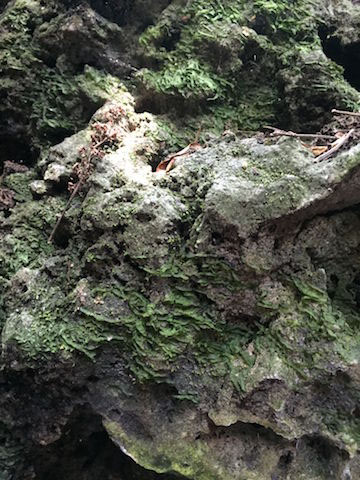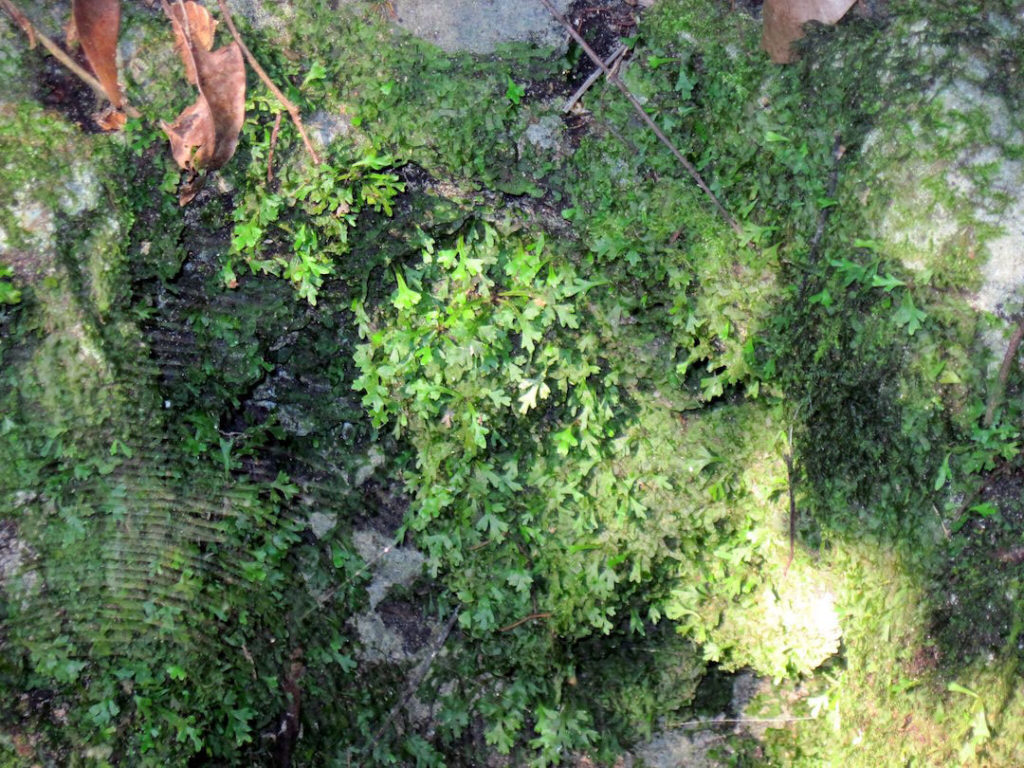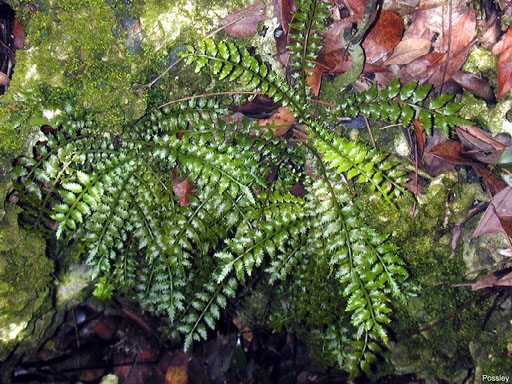A Decade-Long Search Uncovers Plant Hiding in Plain Sight—Climbing Holly-Fern in Urban Preserve
The Climbing Holly-Fern, or Lomariopsis kunzeana, is very rare and found only in South Florida, Cuba, Hispaniola, and Puerto Rico. Even in these areas, the plant is few in numbers. It is almost always associated with native mosses, liverworts, and other native ferns. The Climbing Holly-Fern, like most ferns, consists of the large and showy sporophytes and the tiny gametophytes.
In South Florida, the L. kunzeana population has declined to the point of nearly disappearing from its traditional habitat in the Everglades National Park. There are a few gametophytes and some tiny sporophytes remaining. The last known large sporophyte died when a tree fell on it several years ago. There appears to be only two fertile sporophytes left in Florida, and both are in urban Miami. Both of these were discovered by Jennifer Possley of Fairchild Tropical Botanic Garden during plant surveys.
Possley had been looking for this plant for more than 10 years. While the plant had been considered a commonly associated liverwort, Possley said it gradually dawned on her that it was actually a gametophyte of the Climbing Holly-Fern. Once she realized this, she began finding L. kunzeana gametophytes in many places—including urban preserves where the species was considered to be wiped out or where it was, in fact, never documented.
Possley believes she was fortunate in identifying the fern gametophytes—in this case, she was able to do so because L. kunzeana has unique strap-like gametophytes that look different from those of other ferns, making it easier to recognize. (Fern gametophytes are usually cordate or “heart-shaped.”)
Most of L. kunzeana is right in the middle of Miami, in tiny little urban preserves and, in one case, a forest remnant in someone’s front yard.
Sporophytes and Gametophytes
Unlike flowering plants, ferns have two distinct forms at different points in their life cycles. These are termed sporophyte and gametophyte. When most people think of a fern, they are thinking of the sporophyte. Sporophytes are the larger spore-producing plants with which we are all familiar. When spores land in the proper habitat and germinate, they grow into a gametophyte. Gametophytes are typically tiny (less than 1 centimeter across) and take the form of heart-shaped green blobs, often tucked in moist cracks or crevices.
In most species, gametophytes are the sexual part of a fern’s life cycle. These tiny plants produce sperm and eggs, which fertilize one another and, if successful, grow into a sporophyte.
The life cycle of the fern has two different stages; sporophyte, which releases spores, and gametophyte, which releases gametes. Gametophyte plants are haploid, sporophyte plants are diploid. This type of life cycle is called alternation of generations.
All photos by Jennifer Possley


